 |
 |
 |
 |
 |
 |
Turtle Tyfoon
Lepidochelys Olivaceaf
The Oliver Ridely Sea Turtle gets its common name form its olive colored shell, or carapace.
- They have both front and back flippers with 1-2 claws on each
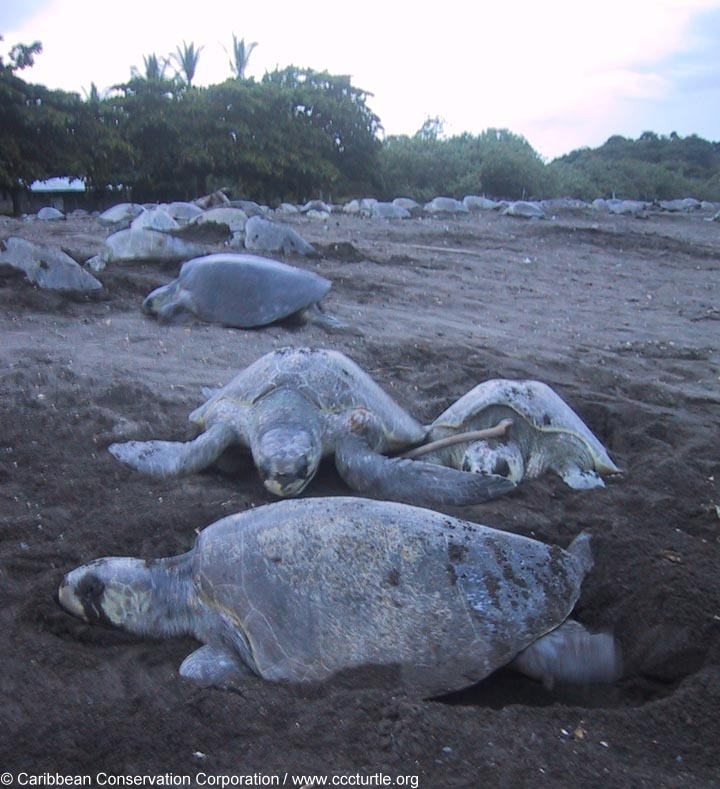
- Adults are a greyish green color while hatchlings appear black with greenish sides
- Adults usually weigh between 77-100 lbs.
- They eat crustaceans ( such as shrimp and crabs)
- Clutch is a nest of hatchling turtles
- Are often found in coastal bays and estuaries (body or area of water where rivers meet the ocean)
- listed interanationally as an endangered species
- listed in the U.S. as threatened
- Estimated population is about 800,000 nesting females
**Survival threats include harvesting of adult shells and eggs, accidental captures due to fishing nets, and the depreciations of nesting habitats for these turtles.**
Eretmochelys Imbricate
Then common name of Hawksbill Sea Turtles originated from the appearance of their beak-like mouths and hawk-like resemblance.
- one of the smallerspeceis of sea turtles
- 2 claws found on each flipper
- Orange, brown and/or yellow colored carapace on Adolecent to adult sea turtles
- Mostly brown colored hatchlings
- Range from 101-154 lbs. in weight as Adults
- Narrow heads and beak-shaped jaws enable these turtles to obtain food from crevices and reefs
- Feed on sponges, anemones, and squid.
- Currently an estimated 22,900 nesting females
- Inhabitate coastal reefs, estuaries, and often loagoons
- Occupy the tropical and subtropical regions of the Atlantic, Pacific, and Indian Oceans
**Survival threats for these turtles are mainly focused on the harvesting of adult shells for jewelry and ornaments in countries around the world.**
Dermochelys Coriacea
The common name of Leatherbacks comes from the leathery appearance of their cartilaginous carapace.
- Adults usually weigh between 600-1,100 lbs.
- Rrecognized as the only reptile to be active in waters with temperatures below 40°F
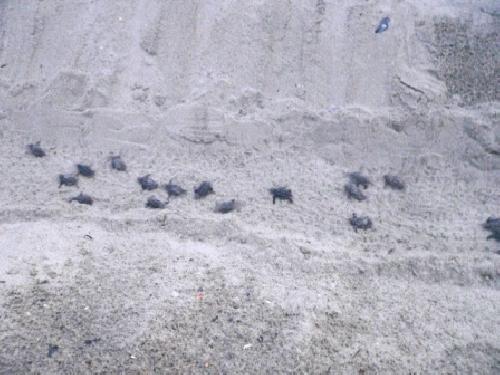
- They have fragile scissor like jaws designed for eating only soft bodied animals
- Deit consists of mainly jellyfish
- Listed as endangered in the United States
- Listed as critically endangered internationally
- Found in all oceanic regions of the world
- Currently an estimated 35,860 nesting females
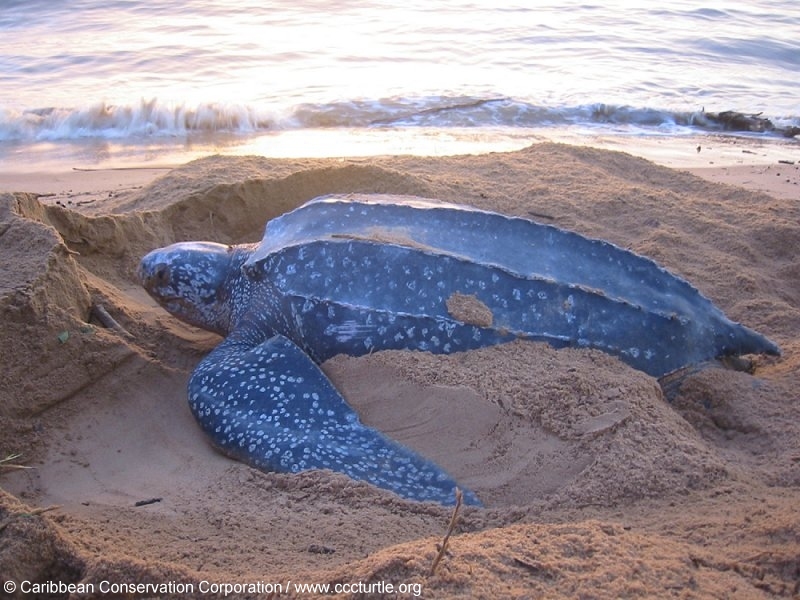
- Live mostly in the open ocean
**The major threats to the survival of these sea turtles are commercial fisheries and pollution of trash that the turtles may mistake for jellyfish.**
Chelonian Mydas
Green sea turtles get their common name from their herbivorous diet that causes the formation of a green fat called calipee.
- Known in the pacific as the Black Sea Turtle
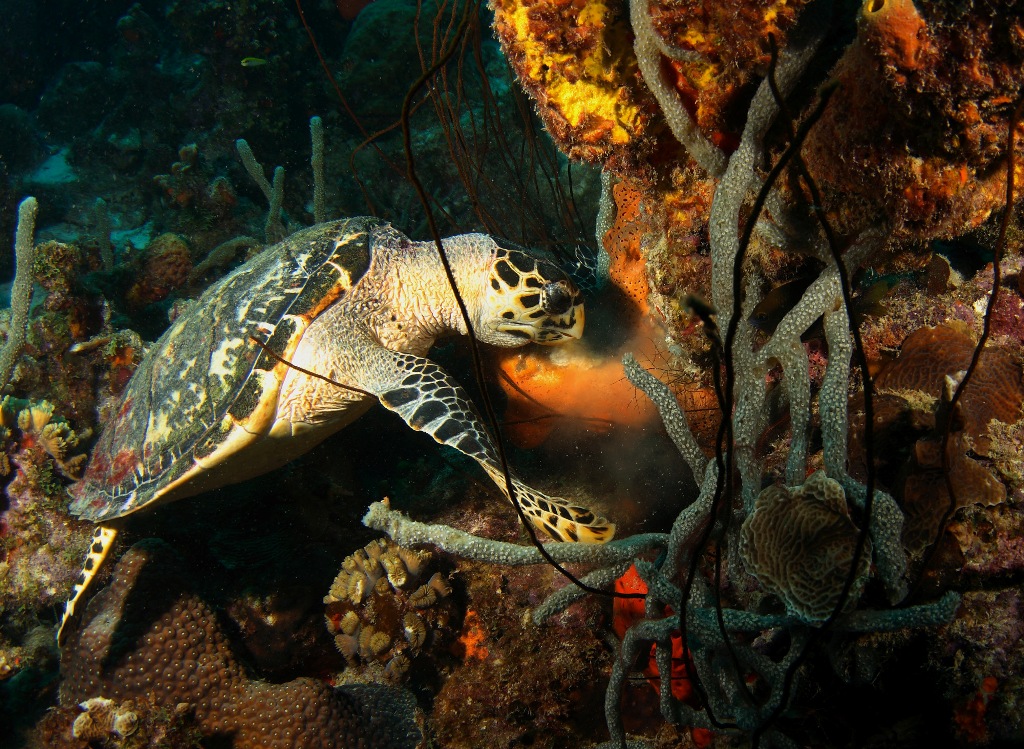
- Adults weigh anywhere from 240-420 lbs. (110-190 kg.)
- As hatchlings (8-10 inches) diet contains worms, small crustaceans, aquatic insects,grass and algae
- Turtles larger than 8-10 inches only feed on sea grass, and algae
- Adults are only herbivores
- Dwell in grass beds, creeks, bays, and salt marshes; rarely ever spotted in the open ocean
- Populate all warm/ tropical waters around the world
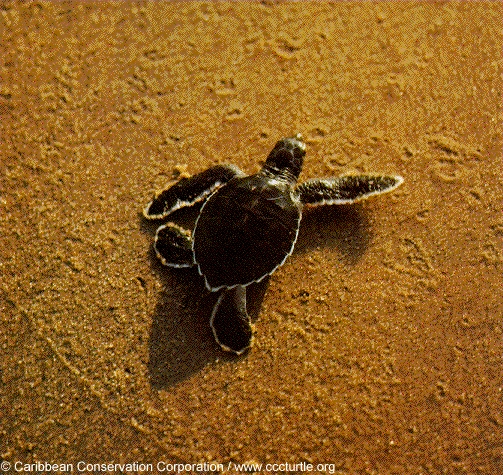
- Listed as Endangered in the United States and internationally
- An estimated population of 88,520 nesting females
**Major survival threats for these turtles are commercial harvesting of both adults and eggs, and accidental cathing of shrimpers.**
Caretta Caretta
The common name of "Loggerhead" comes from their distincively large heads and powerful jaws.
- SOUTH CAROLINA STATE REPTILE
- Weigh around 155-375 lbs.

- Currently an estimated 44,560 nesting females
- Most widespread of all the sea turtles, found mainly in the southeastern United States
- Prey on hard-shelled critters such as conchs
- Listed as threatened in the United States
- Listed as endangered Internationally
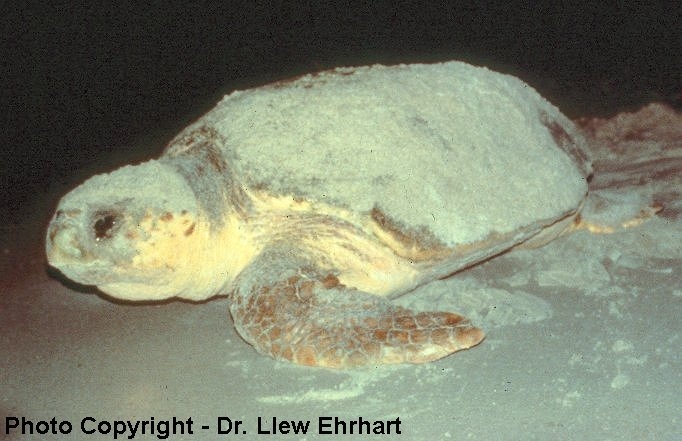
- Found in habitats of coastal bays and estuaries
- An estimated 44,560 nesting females
**Threats to the survival of the loggerhead sea turtles are focused around human disturbances both in the the hatching process and capture in fisherie nets**
Lepidochelys Kempii
The common name of "Kemp's Ridley" originated from Richard M. Kemp who was the first person to describe these turtles while in Florida.
- Typically weigh around 70-108 lbs.
- Known to be the smallest and rarest of all sea turtles species

- Feed on fast swimming crabs (blue crabs) thanks to their powerful jaws designed to crush and grind their hard shells.
- Listed as endangered in the United States
- Listed as critically endangered internationally
- A population of about 2,500 nesting females
- Found mainly in shallow waters with sandy and muddy bottoms
- Live in the Gulf of Mexico, and the warmer waters of the east coast of the United States, and the Northwestern region of the Atlantic Ocean
**The threats to the survival of the these turtles are focused mainly on the human interference through collecting of eggs and killing of adults and juveniles and commercial shrimpers.**
Natator Depressus
Flat Back Sea Turtles get their common name from their abnormally flat carapace, also known as a shell.
- "Depressus" is latin for flat
- Average weight is about 192 lbs.
- Mainly feed on invertebrates such as prawn, mollusks, and sea cucumbers; often eat seaweed as well
- Hatchlings are known to be larger than most species of sea turtles
- Usually found dwelling in coastal coral reefs, inshore waters, bays, and grassy shallows
- Reside in the waters around Australia and Papua New Guinea
- Listed internationally as data deficient
- An estimated population of 20,285 nesting females
**The major threats to the survival of these sea turtles are mainly due to commercial fishing, water polution, nest destruction along beaches, 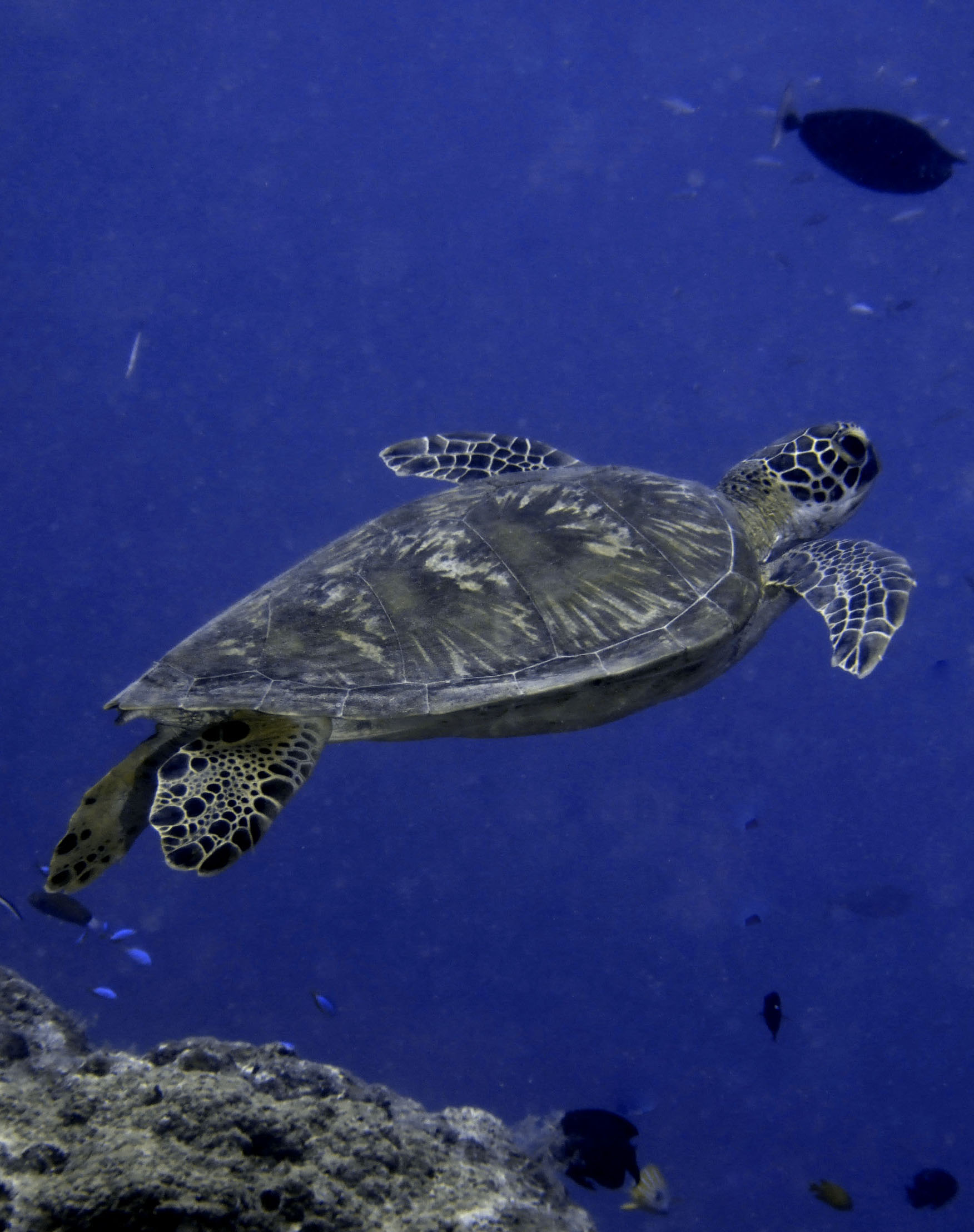 and harvesting of eggs and Adults.**
and harvesting of eggs and Adults.**
10.gif)